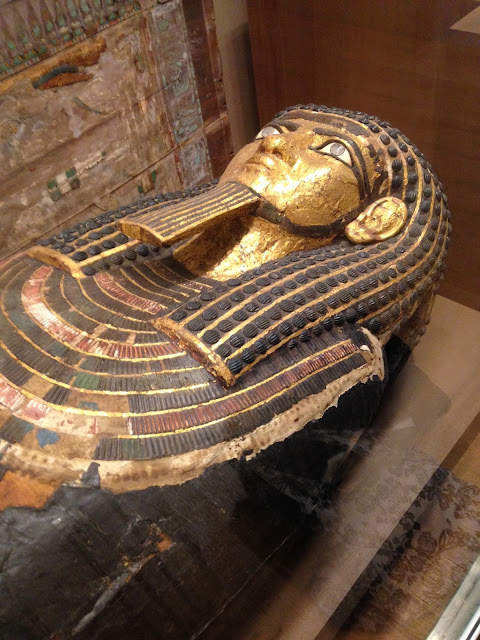Day 410 - Public and political figures, and political correctness in signage
April 14, 2025
Gallery 633 displays portraits made of prominent political leaders and other French notables between about 1750 and 1830. This is where David's portrait of Antoine Lavoisier and Mme. Lavoisier discussed on Day 233 now hangs; I'm glad I discovered this early, because otherwise I would have written about this painting a second time; it's definitely my favorite work in the gallery.
The introductory wall sign notes the turbulent political conditions under which political figures lived. The gallery contains two portraits of Talleyrand. I confess that I know little about him, but I read that he served successively under Louis XVI, the Revolutionary government, Napoleon, and the restored kingdom of Philippe - and I'm impressed by his evident political acumen and ability to make himself invaluable to so many different heads of state.
The same introductory sign emphasizes that France's wealth before the Revolution derived largely from its colonial territories, where enslaved labor helped to ensure the profitable production of coffee, tobacco, and sugar. The sign concludes, "Though not readily visible on the surface of every portrait, the artists and sitters here interacted with this international network through birth, politics, and economics."
This reinforces what the docent said when I visited the National Museum of African American History and Culture last month: Europeans' taste for sugar promoted the expansion of the slave trade. Ever since that visit, I have been thinking about the relationship between the prosperity of the 18th century and human exploitation. The wall sign for a small vitrine holding two period sugar canisters discusses the connection between slavery and sugar cultivation a second time, and that seems justifiable to me.
But really, must every sign strain to say something about slavery? We get the point that slavery was central to the economy of the French Caribbean. A case in point is today's work, a portrait by Antoine Vestier of Eugene Joseph Stanislas Foullon d'Ecotier, who was appointed intendant of Guadeloupe in 1785, the year that the portrait was made. Foulon d'Ecotier is shown holding a map of the island, while on the wall behind him is posted a publication containing the regulations for colonial administration. The placard tells us, "The enslaved labor producing the sugar and cacao that made Guadeloupe so lucrative for the French economy is unacknowledged by these props." But why would it be? Why would you show slavery on a map whose aim is to show the outline of the island? And the print on the document with the regulations is illegible. The placard refers to Vestier's ability to paint details; the details I would pick out here are Foulon d'Ecotier's thick eyebrows, the traces of his beard, the suggestion of his cleft chin, and his awkwardly foreshortened left arm.




Comments
Post a Comment